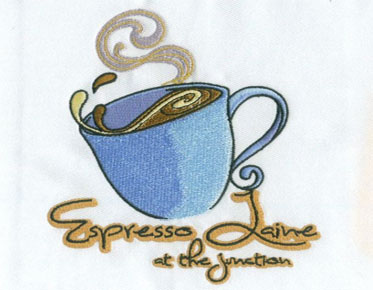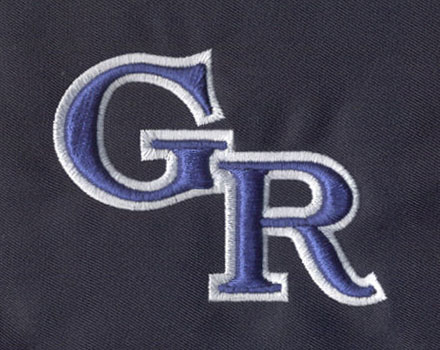Which Stabilizer Do I Need for My Digitizing Embroidery Project?
Stabilizers
are necessary when embroidering. They support the fabric, preventing it from
stretching and distorting with the pressure of the needle. The stabilizer can
be cut to fit in any hoop or frame. Try using water-soluble stabilizers when
working with dark fabrics as they wash out easily with water. If this post spurred your interest and
you want to find out more about embroiderydigitizing, please feel free to contact us.
There are
different types of embroidery stabilizers, and we'll explain the pros and cons
of three popular options. This way, you can compare them and check which one
suits your needs.
Notched
embroidery stabilizer
These
stabilizers strengthen the fabric as you stitch the design. Once you're done,
you simply use a pair of scissors to cut off the excess.
Advantages
of the notched Embroidery stabilizer
The
cutting stabilizer is the most durable type of embroidery backing. They will
always ensure that your stitches are secure and together. These items will
always be a part of your outfit.
Even if
they are sturdy, you can use cutting stabilizers on any fabric.
If you
place the cut-open stabilizer correctly, it will keep your stitches in place
forever. These stabilizers are ideal for long-term projects.
These
backs are excellent for knitwear: Stabilizers will maintain the original look
of the embroidery piece and prevent it from stretching.
Disadvantages
of notched embroidery stabilizer
You can
never completely remove the stabilizer. The only thing you can do is cut off
the excess after stitching the design.
You must
be careful to remove excess and not cut areas inside the design. The stabilizer
must remain in place for the life of the fabric.
Some
models are available only in black and white. As we said, you can't cut open
areas in your design. This means the stabilizers are more visible than you'd like.
Tear
embroidery stabilizer
These
stabilizers are removed naturally. Once the design is spliced, you only need to
find or cut an open end. Grab the stabilizer through the open end and tear it
apart. It's simple but effective!
The
advantages of tearing embroidery stabilizer
You can
use rip stabilizer in almost any fabric. After stitching the design, you can
remove excess backing very quickly.
These
stabilizers support a large number of stitches. They are ideal for large
projects.
The
procedure is simple. Rip stabilizer is easy to use and remove. These elements
will make your workflow more agile.
If there
are any traces that can't be removed, don't worry! These fragments will
disappear after you clean the item several times.
You can
layer these stabilizers if you need extra strength. Remember to remove the
layer separately at the end.
Lacerate
the shortcomings of embroidery stabilizer
You should
not use tear stabilizers on knitwear, elastic fabrics, or very see-through
clothing. In the process of removal, you may destroy your work.
Narrow
open areas of the design may be difficult to remove. If you do not remove the
stabilizer from the area without any stitches, the backing will be visible.
These
stabilizers are not as safe as cut-type stabilizers. Therefore, your design
will be less stable.
Some tear
stabilizers can be removed more naturally in certain directions. It's important
to know this before the resistance of the backing affects your work.
Rinse type
embroidery stabilizer
Water
soluble stabilizers are also known as rinse stabilizers. Both terms are very
descriptive. These stabilizers will remain behind the stitches until you clean
the garment. You can dissolve them by adding water.
Advantages
of water - washed embroidery stabilizer
These
backs are ideal for projects where the fabric is not easily marked. You can
draw on the stabilizer as much as you like: once water is added, the drawing
disappears.
Flush
stabilizers are perfect for projects that don't have any support once
completed. The stabilizer will disappear completely.
If you are
making freestanding lace with an embroidery machine, these stabilizers are
perfect for you.
Disadvantages
of rinse type embroidery stabilizer
After the
stabilizer is removed, there is nothing to hold your sutures together. Unlike
cut-type stabilizers, flush-type stabilizers do not contribute to durability.
In addition, the stabilizers themselves are not as strong as other stabilizers.
You should
not use these stabilizers in fabrics that are not washable.
This
backing does not support as many designs as cutting or ripping stabilizers. You
must pay great attention to your design choices.
How to
choose embroidery stabilizer?
Before
choosing an embroidery stabilizer, you should consider three main factors:
fabric, embroidery design, and back appearance.
Fabric
Your
stabilizer must be complementary to the fabric you are using. If you are using
an unwashable cloth, you should not choose a washable stabilizer. If you sew on
knitwear, you should not use a tear backing.
To ensure that
there are no problems, check the stabilizer instructions before using it on
your project.
Embroidery
design
High
quality digital embroidery design is always the key to success. A good
digitizer always adds some layer as a base support for the stitch.
For
designs with a high needle count, you will need a heavy-duty stabilizer. These
variables are proportional: the more needles, the heavier the stabilizer must
be.
You should
also check the design for blank areas for stitches. For these situations, you
must choose a stabilizer that can be easily removed.
Back
appearance
The
appearance of the front and back of the embroidered cloth is different. For
some stitches, such as freestanding lace, the back aspect is very important. In
these cases, you should always choose a stabilizer that can be removed
completely (such as a rinse stabilizer).
Consider
these three aspects before choosing an embroidery stabilizer. In any case, our
recommendation is always to test the stabilizer before stitching the final
design.



